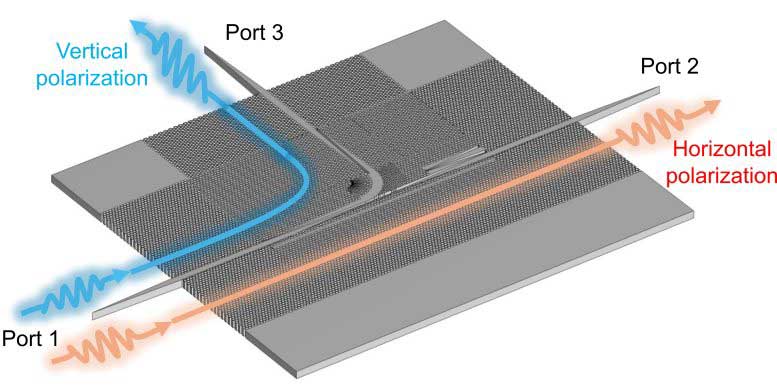New Silicon Chip Boosts 6G Communication Potential
silicon chip 6g communication
A team of researchers has pioneered a novel polarization multiplexer, propelling the advancement of 6G communications.
Terahertz communication technology opens a transformative chapter in wireless systems, offering data transmission rates far beyond those currently available.
By leveraging terahertz frequencies, these systems unlock extraordinary bandwidth, facilitating ultra-high-speed data transfer and wireless communication. Yet, one of the most pressing obstacles remains the efficient management and utilization of this expansive spectrum.
The researchers have created the first integrated terahertz polarization (de)multiplexer, implemented on a substrateless silicon base.
Successfully tested in the sub-terahertz J-band (220-330 GHz), it heralds a breakthrough for 6G and beyond.
The project was spearheaded by Professor Withawat Withayachumnankul from the University of Adelaide’s School of Electrical and Mechanical Engineering, alongside Weijie Gao, a former PhD student now postdoctoral researcher at Osaka University, working under the guidance of Professor Masayuki Fujita.
“Our polarization multiplexer will enable the transmission of multiple data streams on the same frequency band, effectively doubling data capacity,” said Professor Withayachumnankul.
“This device offers an unprecedented relative bandwidth. If scaled to the center frequency of optical communications bands, it would cover the entire spectrum of optical communications.”
Optimizing Communication Capabilities
Multiplexers allow multiple input signals to share a single resource, much like several phone calls being carried on one wire.
The newly developed device doubles communication capacity within the same bandwidth, with lower data loss compared to existing technologies.
Standard fabrication processes make this innovation viable for cost-efficient, large-scale production.
“This development not only elevates the efficiency of terahertz communication systems but also lays the groundwork for more robust and reliable high-speed wireless networks,” Dr. Gao explained.
“The polarization multiplexer plays a pivotal role in realizing the full potential of terahertz communications, opening the door for advancements in high-definition video, augmented reality, and next-gen mobile networks like 6G.”

Charting a Course for Future Innovation
The team’s pioneering work, published in Laser & Photonics Reviews, surmounts critical challenges, substantially advancing photonics-enabled terahertz technologies.
“By resolving key technical hurdles, this breakthrough will ignite further research and interest in the field,” said co-author Professor Fujita.
In the next one to two years, the researchers anticipate an exploration of new applications and refinement of the technology.
Within three to five years, they expect substantial progress in high-speed communication, potentially leading to commercial prototypes and early-stage products.
“Within a decade, we foresee widespread adoption of terahertz technologies across industries, revolutionizing telecommunications, imaging, radar systems, and the Internet of Things,” predicted Professor Withayachumnankul.
This latest polarization multiplexer integrates seamlessly with the team’s prior work on beamforming devices, collectively enabling advanced communication functionalities. The findings on these technologies were previously published in Optica and APL Photonics.
Reference
“Ultra-Wideband Terahertz Integrated Polarization Multiplexer” by Weijie Gao, Masayuki Fujita, Shuichi Murakami, Tadao Nagatsuma, Christophe Fumeaux, and Withawat Withayachumnankul, 29 August 2024, Laser & Photonics Reviews.
DOI: 10.1002/lpor.202400270
This research received funding from the Japan Science and Technology Agency, the National Institute of Information and Communications Technology, and the Australian Research Council.







